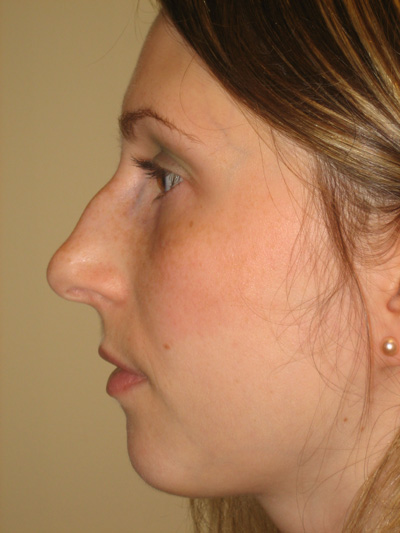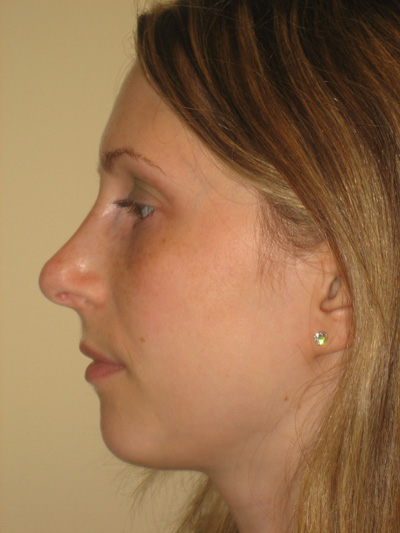
Call (516) 365-3511 to Schedule an Appointment
The nose is often the most prominent feature of the face. When the nose is out of proportion with other facial features, it can greatly affect facial balance and appearance. Whether due to heredity or injury, the size and shape of the nose can be out of proportion and can benefit from rhinoplasty surgery. Rhinoplasty improves the appearance and proportion of the nose, while enhancing facial harmony.



Common features that can be addressed during rhinoplasty include humps or depressions of the bridge of the nose, a wide nasal bridge, wide nostrils, nasal asymmetry, or a tip that is enlarged, bulbous, drooping, or hooked. In cases where there is septal deviation resulting in nasal obstruction, corrective septal surgery can be performed in addition to rhinoplasty to ease breathing and air flow.

Rhinoplasty is typically performed as an outpatient procedure under sedation or general anesthesia. In most cases, all incisions are made inside the nose, so there is no visible scarring. In certain cases an open rhinoplasty is performed, where a small incision is also made at the undersurface of the columella. Over time, this incision heals with an imperceptible scar. The exact extent of the surgery depends on what needs to be addressed, but may include reducing the nasal dorsal hump, narrowing the bridge of the nose, and refining the contour and position of the nasal tip.


At the conclusion of the surgery, a plastic molded splint is usually placed on the bridge of the nose, and is removed within a week of the surgery. Although there is an immediate and dramatic improvement in the shape of the nose following surgery, there may be some initial slight swelling and bruising. Patients are advised to avoid strenuous activity for at least two to four weeks. Most bruising subsides within one to two weeks. However, it may take up to several months for all swelling to resolve and for your new nasal contour to reach its ultimate shape.

Yes. The goal in all plastic surgery, particularly rhinoplasty, is to have a natural-looking result. The objective is to improve the appearance of your nose, while keeping it natural looking and proportioned to your face.
Yes. Most patients will wear a plastic splint over the nose, which is removed within a week after surgery.
You will notice a dramatic improvement in the shape of your nose within the first week of the surgery. At that point there will still be some swelling, but in general, the swelling is not very noticeable. This amount of swelling gradually diminishes within the next several weeks to months. It can take up to a year for all swelling to completely subside and for you to appreciate the final results. Results however are long lasting.
Common features of the nose that are treated during rhinoplasty may include removing the bump to achieve a smoother nasal bridge, reshaping the nasal tip, and narrowing the width of the nose. Rhinoplasty surgery is a highly individualized process where you decide which features you want to alter. Dr. Breitbart will carefully evaluate your individual case and discuss with you what can be done in order to achieve your aesthetic goals.
A return to light, normal activity is usually possible within a few days of the surgery. Ice packs or cold compresses are recommended for the first two days to help reduce swelling. There may be some bruising, which usually subsides within two weeks after surgery. After removal of the nasal splint at the end of the first week, most activities can be resumed. However, physical activity that could result in bumping the nose should be avoided for a few weeks.
For individuals with nasal obstructions, nose surgery can improve airflow through the nostrils and resolve breathing problems. The surgical approach depends on the type of nasal obstruction. The most common type of obstruction is a deviated septum, and the surgery to repair it is called septoplasty or corrective septal surgery.
Some patients undergoing a cosmetic rhinoplasty also have simultaneous procedures to address breathing issues.
Plastic surgeons generally prefer to wait until nasal growth is complete to perform rhinoplasty. The nose typically stops growing around the age of 15 in girls and 16 in boys.
When evaluating teenage candidates for rhinoplasty, Dr. Breitbart looks for emotional maturity. He wants to ensure the candidate is responsible enough to handle the gravity of elective plastic surgery. The doctor also ensures every candidate, regardless of age, has reasonable expectations and understands the potential risks of surgery.
No. Rhinoplasty is an outpatient procedure. You will be released into the care of a loved one shortly after your procedure, and you can recover in the comfort of your own home.
Most patients feel good enough to resume desk work one week after surgery. Individuals whose jobs are physically demanding or strenuous usually may need at least two additional weeks of rest and recuperation before resuming work.
An exceptional rhinoplasty surgeon demonstrates the following qualities:
Great rhinoplasty surgeons should also have positive patient testimonials and a portfolio of “before and after” images that showcase their work.
Long Island and New York City rhinoplasty patients trust their care to Dr. Breitbart. To see for yourself why he is a leading rhinoplasty surgeon, schedule a one-on-one consultation today.
Yes. You will be asked to avoid anything that could potentially put pressure on or disturb your healing nose immediately following surgery. This includes the following:
Dr. Breitbart will provide you with detailed instructions to follow after surgery. If you have questions about any of the instructions, please reach out to the office.